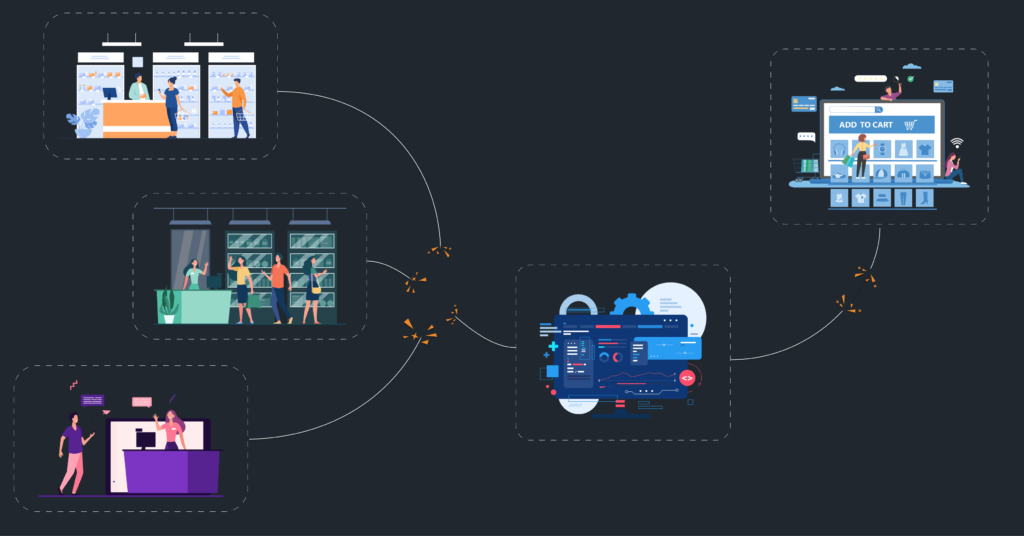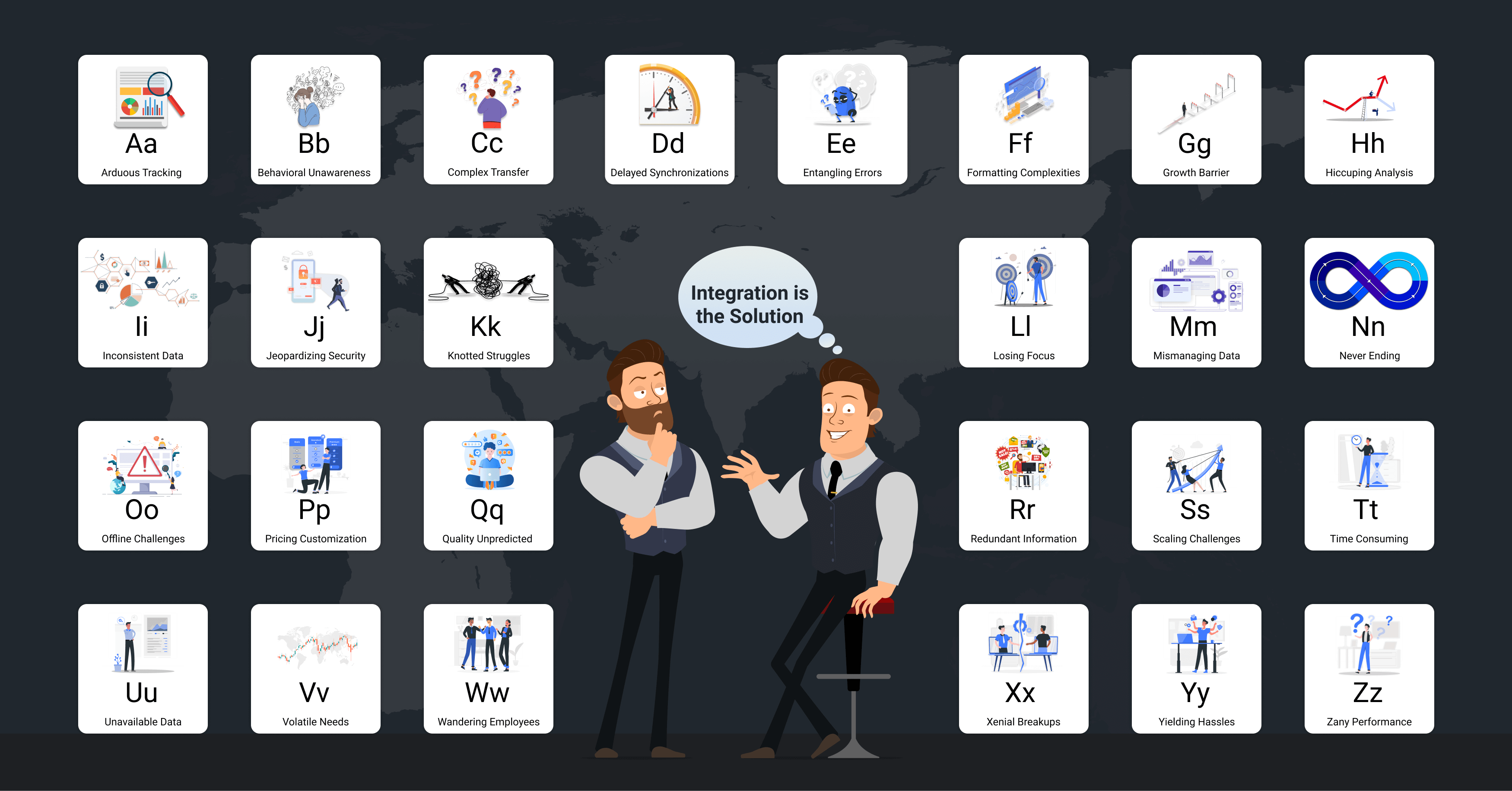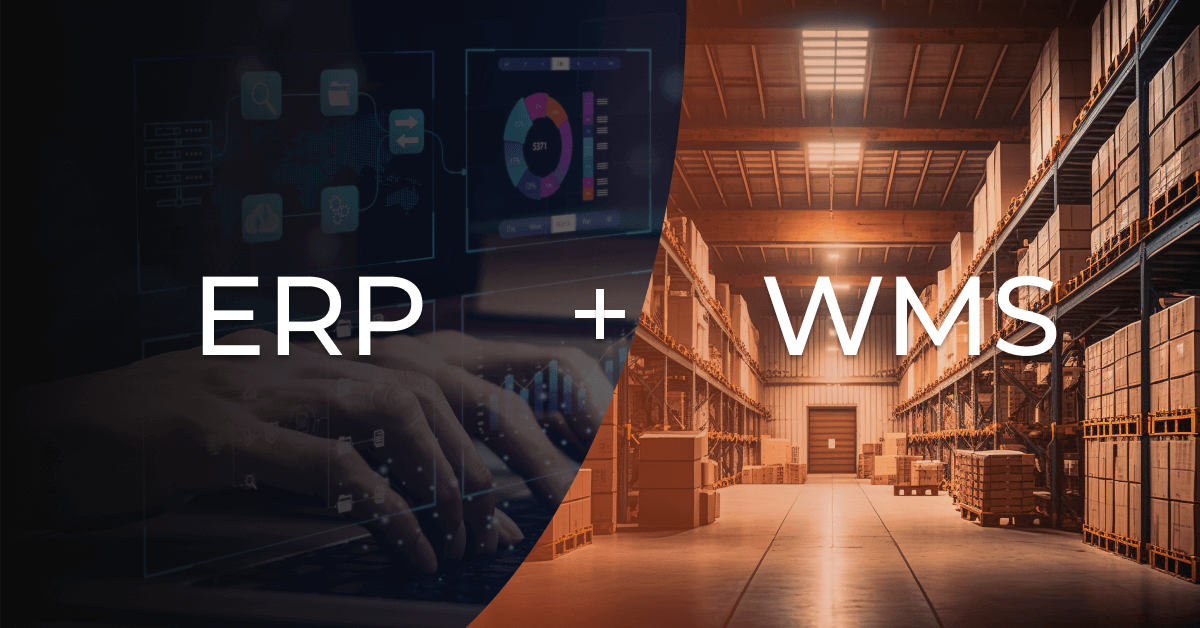COVID disrupted eCommerce
According to Digital Commerce 360 analysis about eCommerce sales, consumers spent $791 billion online with US retailers in 2020. Speaking in terms of percentage, the rise in online shopping is by 44%, with more buyers choosing to shop online from the convenience of their homes safely.
With the outbreak of the pandemic, we sensed a sudden transition into the virtual world. The roads appear deserted, whereas there is heavy traffic online. People’s buying patterns have altered drastically as they prefer to get things done without a physical presence in a restricted geographical arena.
Sustaining The New Normal
With the change in trends, many businesses had to choose eCommerce and offline business for survival. The online business setup demands additional investment in terms of money and resources.
Once an eCommerce business website is launched, it seems as if the uphill online store setting journey is over, but that’s just a bend, not the actual end. Want to know what’s beyond that bend?
After your eCommerce platform is launched to network with customers virtually, you will sense a need to maintain all data related to the supply chain either with files of paper documentation or at least in an excel spreadsheet. Then, when the business begins to scale up, you will start longing for a better system for Enterprise Resource Planning.
Implementing an Enterprise Resource Planning System assists in keeping track of data across departments of different geographical zones in one spot. For example, sales, manufacturing, and marketing teams work in different locations. Updating all data into one place assists in understanding how resources are utilized and play a crucial role in the major decision-making of the business. In addition, using cloud-based ERP provides access to data from anywhere.
According to the estimation by Markets and Markets, the global cloud ERP market size is expected to grow from $45.3 billion in 2020 to $101.1 billion by 2025 with the Compound Annual Growth Rate (CAGR) of 17.4%.
With your eCommerce website ready and Enterprise Resource Planning (ERP) System implemented, you will realize your offline business getting tracked with another software. When all these (offline system, online business and ERP system) are on different platforms, the challenges are tremendous – especially, when you plan to track consolidated customer behavioral patterns or stock management details with your offline business distributed in various geographical locations.

A-Z Struggles Without Integration
What will happen if the online, offline, and ERP systems remain disconnected without communicating with each other? Here is a list of A-Z complaints (or rather, pain points) we have listened to so far.
Arduous Tracking:
Tracking orders is an arduous process. Even though you may have an eCommerce site and ERP, you turn outdated to your customers when you take it manually to track the orders or products in various geographical locations. Remember, old is not gold here. Suppose an order placed is not updated immediately in ERP; you may go wrong with the information.
Behavioral Unawareness:
When eCommerce, ERP, and CRM systems are separate, you may not be aware of important behavioral insights about customer satisfaction and product performance. A customer can be an anonymous user or a registered user or a direct customer physically visiting different branches of your store. To observe the pattern, you may need to invest in extra resources. Remember, ignorance is not bliss here.
Complex Transfer:
Data transfer across online and offline systems is more complex than you could imagine. The output of one cannot be directly provided as the input to the other. They demand different specifications. Remember like poles (similar data specifications) attract here. But sadly, that doesn’t exist, and hence the data transfer between systems is complicated.
Delayed Synchronizations:
You may have business both online and offline. When you introduce new products, remember you may get new customers online/offline. You will experience delays and additional resource investment in updating the data manually in all systems. You may hire the fastest typist on the earth but remember, time and tide wait for none. Even the shortest delayed synchronizations can have disastrous effects.
Entangling Errors:
When data is fed manually, there are chances for errors to creep in. You may hire the most perfectionist in the world but remember to err is human. Even a single typo in one of the systems has its risky consequences.
Formatting Complexities:
When you plan to transfer data between systems, the type or format demanded is different. Remember to be a Roman while in Rome. So, it would be best if you had an intermediate resource to transform the data into the requested format of every system.
Growth Barrier:
When your business expands, you will understand the need for extra human resources and effort to keep your ERP updated. The requirement keeps increasing proportionally to the business growth, thereby creating a barrier to ideal growth. M. Scott Peck said that problems never vanish. They must be worked through, or else they remain forever a barrier to the growth and development of the spirit.
Hiccuping Analysis:
When analyzing the product information or customer details, even the best analyst might get stuck with the real-time analysis due to dependency on manual data entry. Hiccups in analyzing can end up in losing potential prospects. Remember Benjamin Franklin’s quote, ”By failing to prepare, you are preparing to fail.”
Inconsistent Data:
The data should be the same when trying to view details on offline business software/ eCommerce sites/ERP/CRM. But when manually entering, there can be differences in data due to errors or delays. Remember that it is important to be the same person publicly, privately, and personally. The data should be consistent across platforms online and offline.
Jeopardizing Security:
When you enter data manually into systems, you entirely trust the manual entry operator. Just in case if things go wrong, it would be hard to track the issue. When your data is on multiple platforms, you will be even more confused about which data is correct and which is not. Look before you leap.
Knotted Struggles:
Struggles queue up one after the other since tasks are dependent on each other. Your customer may place an order; if that is not updated in real-time synchronously in all systems, you may end up in struggles with the number of products currently available. Suppose another customer orders the same product, which is unavailable, and it will end up in chaos. A stitch in time could save nine. Integration software is the solution to all problems.
Losing Focus:
Not having an ERP Integration Software, the employees may focus on negotiating about transactions or searching for particular data instead of focusing on the business. Working without focus on improvising the business is like traveling without knowing the destination.
Mismanaging Data:
When a wide range of new products are introduced, maintaining the data manually demands much effort in CRM, ERP, and eCommerce websites. Furthermore, if many people are taking up the manual entry in shifts or parallel, care should be taken to check the updates of what has been completed to avoid redundancy.

Never Ending:
The manual entry is not a one-time task. The task is a repetitive task to be done now and then across the systems. In other words, this manual task is never-ending; your employees may get tired or bored with the monotonous routine. It is like repeating the same song in an infinite loop instead of enjoying the option to customize and automate a list of songs.
Offline Challenges:
Since the systems are different for online and offline orders, when you want to know the total sales or number of products sold out, on the whole, the analysis is challenging without integration. Remember that the early bird catches the worm. When you are not clear with the basic details, the challenges are real.
Pricing Customization:
When you would like to customize the pricing for different customers based on their previous purchases, especially when a customer uses offline and an eCommerce site, you may need to interact across systems quickly. It is crucial to customize the price based on the market value at the right time. Without interaction, the business strategy of customizing price turns out to be building castles in the air.
Quality Unpredicted:
When manually updating data across systems, the quality of data is at stake. The data can be accidentally erroneous. Remember, without a solid foundation; you’ll have trouble creating anything of value.
Redundant Information:
When updates are made manually, redundant data may creep in, which is tough to track. Manually, the data has to be analyzed for duplicates. Remember, with a keen eye for details, one truth prevails.
Scaling Challenges:
When you scale up without an automated ERP Integration, you will find challenges in dimensions of human resources, time, and tedious effort for accurate analysis. Don’t settle for less just because it is available now.
Time Consuming:
Without an ERP integration software, you would be locked up with not-so-important tedious tasks- finding less time for important tasks such as improvising on business. Time management is life management and business management too!
Unavailable Data:
If you don’t have immediate access to some key customer data, you may miss the opportunity that knocks at the door but once. Whereas when there is real-time and updated data available, companies can make informed decisions for business growth.
Volatile Needs:
Change is the only constant. The data keeps changing; the demands keep changing, the strategies keep changing, and so do businesses. Observing the varying trends matters — if it takes time, you may miss out on understanding the current pattern in the market.
Wandering Employees:
Your employees may have multiple targets like entering data faster, concentrating on the business, ensuring customer satisfaction, etc. Remember, Jack of all trades is the master of none. Free up your employees’ time and let them focus on business-building tasks while an automated system takes care of the data transfer.
Xenial Breakups:
Your relationship with the customers can be affected if your website is not user-friendly with updated details on time. Every penny counts. Make sure your website UX is seamless and convenient.
Yielding Hassles:
In the absence of automated integration, the to-do list is no longer practically resulting in hassles. Remember that he who is always in a hurry to get things done never gets it done right.
Zany Performance:
You may find yourself stressing trying to provide customer satisfaction. You’ll never know how better and stress-free things could be until you try integration software.
The problems are aplenty, but the solution can be one if you act on time and choose wisely to connect your ERP and eCommerce. Scale-up faster and smarter with automation.
ERP Integration – The Solution
United we stand, divided we fall. Integrated your applications, all will be on the same page of understanding your business book with effective communication across systems.
Automated integration will handle data flow across different systems avoiding incomplete and inaccurate data errors and delays.
With systems integrated, you will have a seamless experience with ample time to think over useful business strategies without worrying about data quality.
Is Integration Worth The Investment?
Investing in integration software results in improved performance, but definitely, it demands additional investment. An ideal software integration costs anywhere between $15,000 to $40,000 (based on how many applications you would like to integrate and how complicated the customization is).
The next question would be, “Is an integration software worth the investment? And what kind of integration would be the best fit?”
Whenever you have to choose between two things, the best approach would be to jot down the pros and cons, understand what can be compromised and what cannot be compromised, and then make the final decision based on that. So, it is time to think about the pros and cons of having and not having an integration software. The table assists in listing a few fundamental dimensions to consider.
| Criteria | Without Integration | With Integration |
| Human Resources for Data Updation (The lower the human resources, the higher the cost savings) |
||
| Time Taken For Data Analysis (The lesser time required, the faster decision-making process) |
||
| Real-Time Risk Analysis (The lesser the errors, the more accurate the analysis; The shorter the delays, the faster the analysis; |
||
| Implementing New Strategies (The more customized offers/suggestions you provide for customers based on online and offline histories, the higher the customer retention) |
||
| Handling Business Growth (The more your business expands, the more efficiency is expected across online and offline stores) |
||
| Repetition of Same Tasks (The more the repetition of tasks, the more to think about cost-saving automation) |
||
| Summary: Total Investment (Human Resources, Money, Time) |
Take time to add your customized criteria, fill in the boxes with your valuable thoughts, and decide based on the most important factors to be considered.
Experiment and Experience
Experience is the best teacher. You can learn from the experience of others who have walked in your path. If you would like to know more about how integration has impacted the ROI of companies in real-time, on average our customers experienced 33% increased sales. To know many such stories on how ERP Integration led to an increase in efficiency and productivity for so many organizations across the globe, read here.
The world is not going to be the same hereafter. So, why let your company be the same? Instead, adapt to the technological changes, innovate, and disrupt the industry.
Contents




